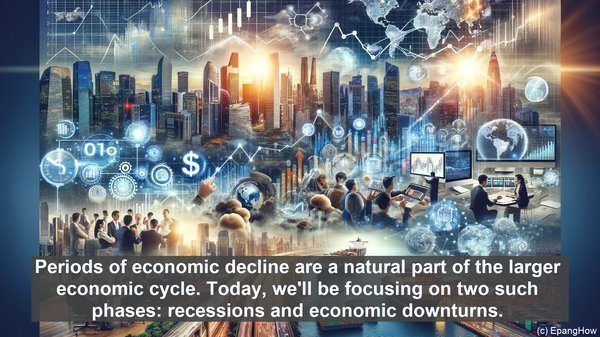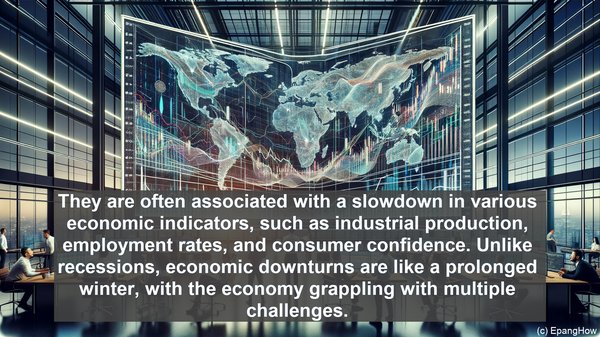Introduction: The Ebb and Flow of Economies
Hello everyone, and welcome to today’s article. When it comes to the economy, it’s not always smooth sailing. Periods of economic decline are a natural part of the larger economic cycle. Today, we’ll be focusing on two such phases: recessions and economic downturns. Though these terms are often used interchangeably, they aren’t entirely synonymous. So, what sets them apart? Let’s dive in!
Defining Recessions: More Than Just a Dip
A recession is generally characterized by a significant decline in economic activity across various sectors. It’s marked by a contraction in the gross domestic product (GDP) for two consecutive quarters. During a recession, businesses may experience reduced demand, leading to layoffs and a decline in consumer spending. Stock markets may also witness a downturn, with investors becoming more cautious. In a nutshell, recessions are like economic storms, disrupting the otherwise stable growth.
Understanding Economic Downturns: A Broader Perspective
While a recession is a specific phase within an economic downturn, the latter encompasses a more extended period of economic decline. Economic downturns can last for months or even years, with multiple recessions occurring during this time. They are often associated with a slowdown in various economic indicators, such as industrial production, employment rates, and consumer confidence. Unlike recessions, economic downturns are like a prolonged winter, with the economy grappling with multiple challenges.

Causes and Triggers: The Catalysts Behind the Decline
Both recessions and economic downturns can be triggered by various factors. Some common catalysts include financial crises, such as the one in 2008, which led to the Great Recession. Other triggers can be policy changes, natural disasters, or even global events, like the ongoing COVID-19 pandemic. It’s important to note that while a trigger may set the decline in motion, there are often underlying structural issues within the economy that contribute to its severity and duration.

Impacts and Ramifications: A Ripple Effect
The effects of recessions and economic downturns are far-reaching. Beyond the immediate job losses and business closures, there are broader consequences. Governments may witness a decline in tax revenues, limiting their ability to invest in infrastructure or social programs. Individuals may face challenges in accessing credit or experience a decline in their investments’ value. The ripple effect can extend to global trade, with reduced demand impacting export-oriented industries. In short, the impacts are multi-dimensional.
Recovery and Rebound: Light at the End of the Tunnel
While recessions and economic downturns can be daunting, history has shown that economies are resilient. Recovery often begins with government interventions, such as fiscal stimulus or monetary policy adjustments. Over time, as confidence is restored, businesses start to invest, and consumer spending picks up. This gradual revival is akin to the arrival of spring after a long winter. However, the duration and pace of recovery can vary, depending on various factors.
